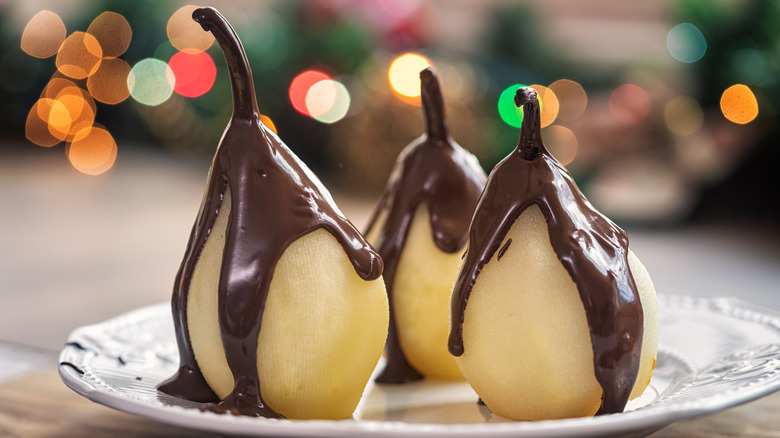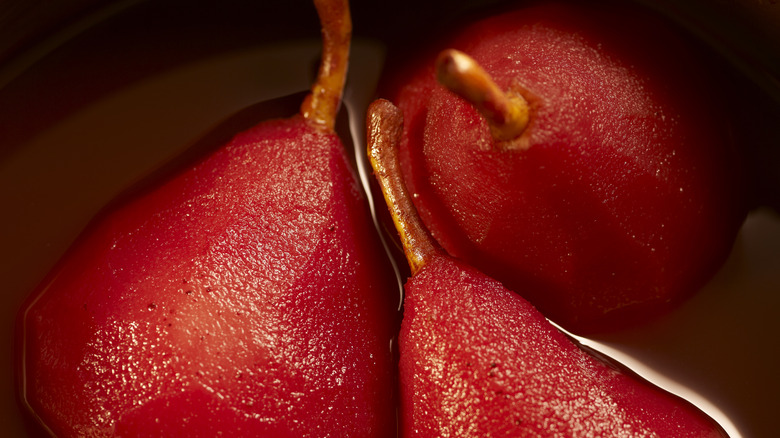Poaching Fruit In Sweet Tea Results In A Delectable Dessert
Poached fruit is an easy and elegant dessert to make without having to turn on an oven. Poaching liquids vary from wine to citrus to butter and beyond. For a sweet poaching application, these liquids require the addition of sugar. However, sweet tea will save you the extra ingredient and impart a rich aromatic flavor to your poached fruit.
Sweet tea is a classic Southern tradition that typically uses lemon-flavored black tea brewed with hearty amounts of sugar and served ice cold. It's since grown in popularity, encompassing a wide variety of tea flavors and bottled brands. Consequently, you don't even have to brew your own sweet tea for poaching liquid — you have the benefit of choice with bottled sweet tea, allowing you to hand-pick distinct tea flavors to pair with your favorite fruit.
Not only does sweet tea have all of the sugar you need but it is also an infused liquid with a long list of herbs, spices, and, in many cases, fruit zest. Reheating the tea while poaching fruit will further bloom the aromas of the spices and herbs while also enhancing the bitter tannins for a poached dessert with a significant depth of flavor. Sweet tea provides a complex foundation that you can build upon by adding similar or complementary spices to the mix. In fact, adding spices, fruit peels, and fresh herbs are ways to elevate sweet tea you plan on drinking, too!
Poaching tips
Poaching is a fairly quick and efficient method to transform fruit into juicy and flavorful desserts that taste like pie filling and make for a stunning presentation. Furthermore, the poaching liquid transforms into a delicious multi-use reduction that you can pour over the poached fruit, use as a simple syrup for cocktails or Italian sodas, or as a preservation liquid to store poached fruit in the fridge.
You have various avenues of execution for this slow and low cooking method including submersion, partial submersion, shallow poaching, and par-poaching. Submersion covers the fruit completely in the poaching liquid by placing parchment paper or weight over the fruit to keep it submerged. Shallow poaching partially submerges the fruit, requiring you to cover the pot to steam the exposed half or use tongs to flip the fruit halfway through. Par-poaching is a streamlined submersion poaching technique where you poach the fully submerged fruit for a short period, then cover the pot and let the fruit continue to cook using the residual heat.
The best fruits for poaching are stone fruits or other sturdy fruits that will keep their shape and not break down into a compote. Pears, cherries, plums, peaches, nectarines, and apricots are all wonderful candidates. You can choose a flavored sweet tea that complements the fruit you poach. For example, a raspberry or hibiscus sweet tea would bring a tart zing to complement the sweetness of peaches and nectarines.

